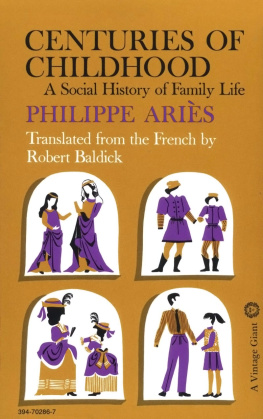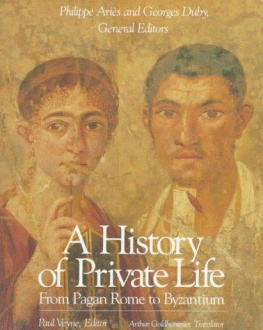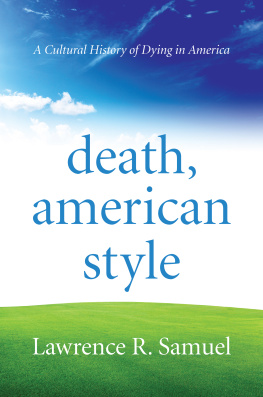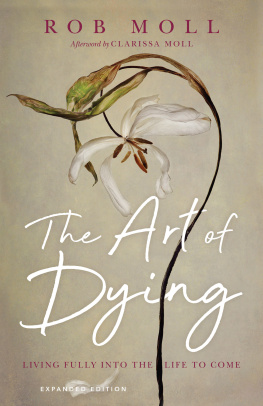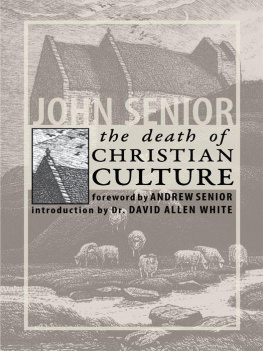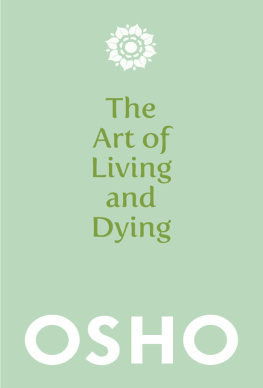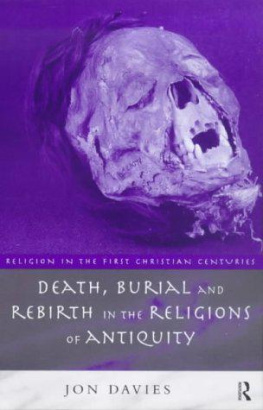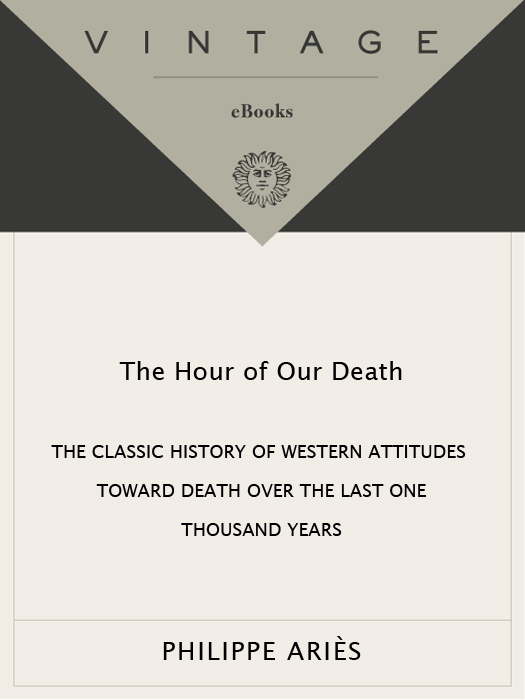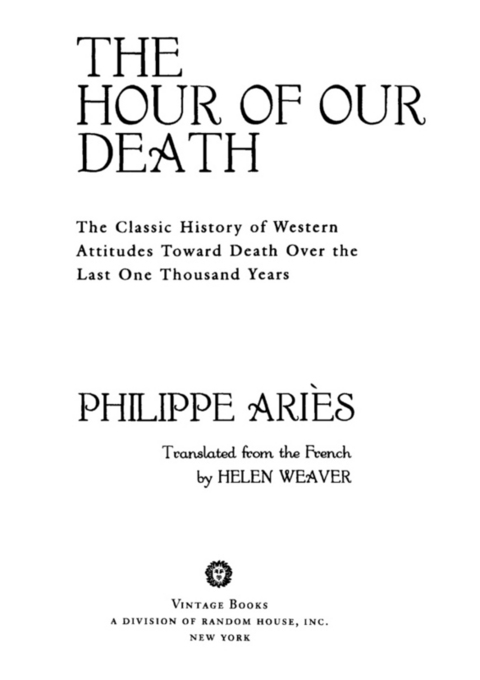Philippe Aries - The Hour of Our Death: The Classic History of Western Attitudes Toward Death over the Last One Thousand Years
Here you can read online Philippe Aries - The Hour of Our Death: The Classic History of Western Attitudes Toward Death over the Last One Thousand Years full text of the book (entire story) in english for free. Download pdf and epub, get meaning, cover and reviews about this ebook. year: 2008, publisher: Vintage Books, genre: Religion. Description of the work, (preface) as well as reviews are available. Best literature library LitArk.com created for fans of good reading and offers a wide selection of genres:
Romance novel
Science fiction
Adventure
Detective
Science
History
Home and family
Prose
Art
Politics
Computer
Non-fiction
Religion
Business
Children
Humor
Choose a favorite category and find really read worthwhile books. Enjoy immersion in the world of imagination, feel the emotions of the characters or learn something new for yourself, make an fascinating discovery.

- Book:The Hour of Our Death: The Classic History of Western Attitudes Toward Death over the Last One Thousand Years
- Author:
- Publisher:Vintage Books
- Genre:
- Year:2008
- Rating:3 / 5
- Favourites:Add to favourites
- Your mark:
The Hour of Our Death: The Classic History of Western Attitudes Toward Death over the Last One Thousand Years: summary, description and annotation
We offer to read an annotation, description, summary or preface (depends on what the author of the book "The Hour of Our Death: The Classic History of Western Attitudes Toward Death over the Last One Thousand Years" wrote himself). If you haven't found the necessary information about the book — write in the comments, we will try to find it.
Starting at the very foundations of Western culture, the eminent historian Phillipe Aris shows how, from Graeco-Roman times through the first ten centuries of the Common Era, death was too common to be frightening; each life was quietly subordinated to the community, which paid its respects and then moved on. Aris identifies the first major shift in attitude with the turn of the eleventh century when a sense of individuality began to rise and with it, profound consequences: death no longer meant merely the weakening of community, but rather the destruction of self. Hence the growing fear of the afterlife, new conceptions of the Last Judgment, and the first attempts (by Masses and other rituals) to guarantee a better life in the next world. In the 1500s attention shifted from the demise of the self to that of the loved one (as family supplants community), and by the nineteenth century death comes to be viewed as simply a staging post toward reunion in the hereafter. Finally, Aris shows why death has become such an unendurable truth in our own centuryhow it has been nearly banished from our daily livesand points out what may be done to re-tame this secret terror.
The richness of Ariss source material and investigative work is breathtaking. While exploring everything from churches, religious rituals, and graveyards (with their often macabre headstones and monuments), to wills and testaments, love letters, literature, paintings, diaries, town plans, crime and sanitation reports, and grave robbing complaints, Aries ranges across Europe to Russia on the one hand and to England and America on the other. As he sorts out the tangled mysteries of our accumulated terrors and beliefs, we come to understand the historyindeed the pathologyof our intellectual and psychological tensions in the face of death.
Philippe Aries: author's other books
Who wrote The Hour of Our Death: The Classic History of Western Attitudes Toward Death over the Last One Thousand Years? Find out the surname, the name of the author of the book and a list of all author's works by series.

